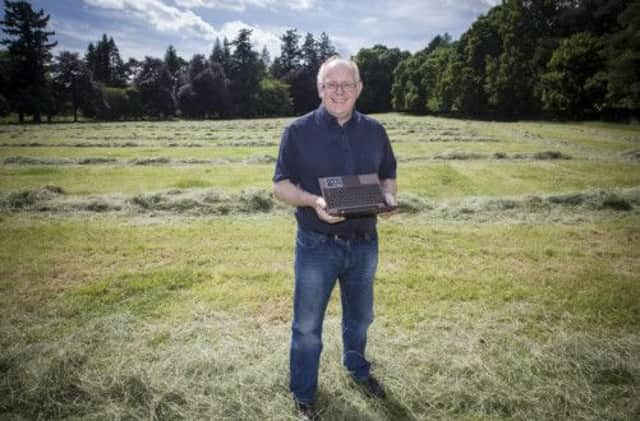World’s oldest calendar found in Aberdeenshire


A row of ancient pits were uncovered at Crathes Castle, which archaeologists believe represent the months of the year, and lunar phases of the month.
The formation, at Warren Field, was first excavated in 2004, with experts from the University of Birmingham suggesting the ancient monument could date back to around 10,000 years ago.
Advertisement
Hide AdThere are signs that the network of pits was in use for over 4000 years, and archaeologists have admitted that it is impossible to know whether they originally held timber posts or standing stones.


Measuring 50 metres in length, the row of 12 pits was found to be arc-shaped, possibly designed to mimic the movement of the moon across the sky, and although mainly used as an annual calendar (with each pit representing a month), it could also have been used to represent the lunar month.
Variations in the design suggest that the network was particularly complex, with each lunar month split into three ten-day ‘weeks’, representing the three stages of the moon - waxing, full and waning.
The 12 pits, of alternating depth, could have been used to mirror the phases of the moon, starting small and shallow at one end, and growing in depth towards the middle before decreasing again at the other end whilst the differently-sized pits suggests that adjacent months may have been paired in an early cosmological pattern.
Professor of Landscape Archaeology at Birmingham University Vince Gaffney, who led the project, said: “The evidence suggests that hunter-gatherer societies in Scotland had both the need and sophistication to track time across the years, to correct for seasonal drift of the lunar year and that this occurred nearly 5,000 years before the first formal calendars known in the Near East.”
Dr Richard Bates, from the University of St Andrews confirmed that there is ‘no known comparable site in Britain or Europe’ while Dr Shannon Fraser of the National Trust for Scotland added: “This is a remarkable monument, which is so far unique in Britain.
Advertisement
Hide Ad“Our excavations revealed a fascinating glimpse into the cultural lives of people some 10,000 years ago - and now this latest discovery further enriches our understanding of their relationship with time and the heavens.”
Excavations initially began at the Warren Field site after the Royal Commission on the Ancient and Historical Monuments of Scotland (RCAHMS) came across unusual crop marks in the ground.